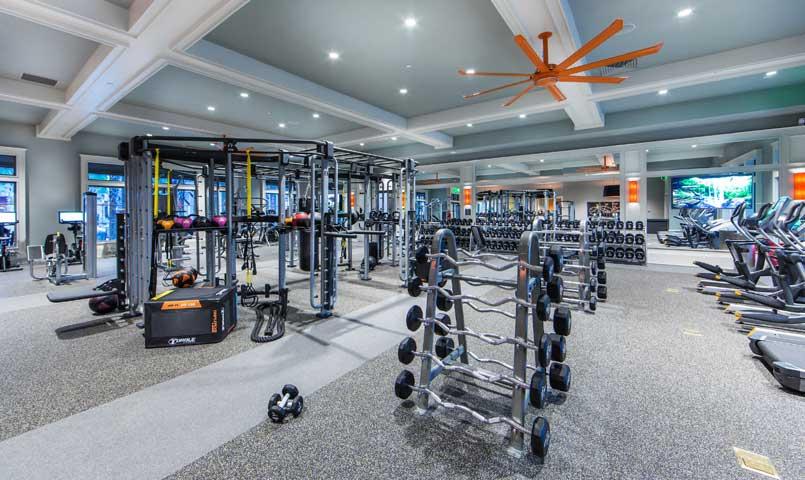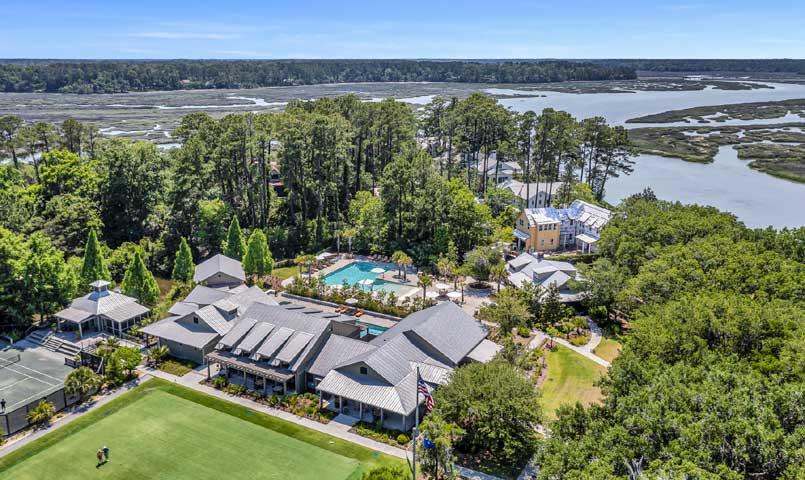by Robert Borges on June 19, 2024
6-minute read
In a world of fast-paced living and digital overload, people are increasingly seeking balance by prioritizing health, wellness, and social connection—especially when choosing where to live.
So much so that those looking for homes in a community environment overwhelming prioritize amenities related to health and fitness, according to PCR research. Eighty-one percent of respondents said “active lifestyle amenities” are the reason they want to live in a community, and they cited swimming pools, walking/biking trails, and fitness centers as their most-preferred amenities. Further underscoring the importance of social engagement as well as physical and emotional well-being, a clubhouse, golf, tennis, pickleball, and spas were cited as desirable attractions as well.
Enter wellness communities—a burgeoning movement where like-minded individuals come together to nurture their physical, mental, and emotional health in a supportive, holistic ecosystem. These communities, often set in serene locations, offer a sanctuary from the chaos, promoting practices like physical fitness, socialization, and overall balanced, sustainable living.
In this article, we’ll explore the rise of wellness communities, examining the factors driving their popularity and the profound impact they have on their residents.
Jump To:
What Are Wellness Communities?
Who Are Wellness Communities For?
Benefits of Wellness Communities
Types of Wellness Communities
The Future of Wellness Communities
Featured Wellness Communities

What Are Wellness Communities?
Simply put, they’re communities designed with a focus on fostering a healthy lifestyle for residents. And it's not just about aesthetics (though those stunning nature views sure don't hurt). The Global Wellness Institute defines them as groups "living in close proximity who share common goals, interests, and experiences in proactively pursuing wellness across its many dimensions." This can encompass everything from physical fitness to mental well-being, healthy eating, and even a connection to nature. To that end, wellness communities offer residents perks and amenities like expansive fitness facilities, trails and outdoor recreation opportunities, community gardens, farms, lifestyle classes and programs, and an array of social clubs and activities.
Thriving in North America, the wellness real estate market reached a value of $52.5 billion and is experiencing a steady annual increase of 6.4%, according to a report from the Global Wellness Institute. On a global scale, the wellness real estate sector had ballooned to $134 billion in 2017 and has been on the rise ever since.
Who Are Wellness Communities For?

Wellness communities aren't one-size-fits-all. They can range from luxury developments nestled amidst nature to walkable urban neighborhoods with a focus on sensible living. They can appeal to a wide range of demographics, from young families seeking a nurturing environment to raise their kids to retirees looking for an active and social lifestyle. Some of groups who find solace in wellness communities include:
Health Enthusiasts: Individuals committed to maintaining a way of life focused on holistic health and wellness, creating a lifestyle that nurtures both the body and mind. Florida tennis communities are popular for those looking for wellness communities to keep them active and fit.
Retirees: Older adults looking for a supportive environment that offers a blend of resort-style amenities, healthcare facilities, and neighborly camaraderie.
Families: Parents seeking a secure and safe environment for their children.
Remote Workers: Professionals who can work from anywhere and prefer a location that supports a balanced lifestyle.
Eco-conscious Individuals: People who prioritize sustainability and want to live in eco-friendly environments.
The Allure of Belonging: Benefits of Wellness Communities
The benefits of wellness communities go beyond access to a lap pool or a juice bar. Here are some key advantages:
Social Support: Wellness communities foster a sense of belonging and togetherness, providing a built-in support network for residents. They often include spaces for meditation, yoga, and other head-clearing activities. Intentional design throughout these communities encourages social encounters, increases community interactions, and builds trust and civic engagement among residents. Ultimately, these group activities and support networks help reduce feelings of isolation and depression.
Healthy Habits Made Easy: Living in an environment that prioritizes physical activity, healthy eating, and stress reduction can make it easier to adopt and maintain these habits. Imagine walking out your door and being greeted by a walking trail instead of a busy street. With easy access to fitness facilities, organic farm-to-table food options, and medical care, residents are more likely to maintain a healthy lifestyle. People who live in wellness-focused communities are generally more active and have lower rates of chronic diseases.
Reduced Stress: Studies show that strong social connections can buffer the effects of stress. Wellness communities can provide a refuge from the pressures of daily life, promoting relaxation and mental health.
Access to Resources: It’s common to find communities with on-site wellness amenities like yoga studios, fitness centers, spas, sports facilities, and even healthcare professionals. This makes it convenient for residents to prioritize their quality of life.
Environmental Benefits: Community wellness means keeping sustainability top of mind, incorporating green building practices, renewable energy sources, protected land, nature preserves, and organic farming. This not only benefits the planet but also creates a nourishing and restorative living environment. By minimizing environmental impacts on human health, these communities reduce toxic substance exposure, improve sleep, reduce stress, and promote earth-friendly practices.
Finding Your Niche: Different Types of Wellness Communities

There are a variety of residential communities that put an emphasis on health and wellness. These include master-planned communities, multifamily housing, urban districts and mixed-use projects, resort/spa-based real estate, and other types of projects. A few types of wellness communities include:
Naturhoods: Incorporates natural elements and green spaces into its environment, promoting a connection with nature and supporting ecological sustainability. They often feature walking trails, community gardens, and focus on outdoor activities.
Agrihoods: Integrated with a working farm or garden, agrihoods are designed to provide residents with locally grown food and cultivate a sustainable, farm-to-table lifestyle.
Active Lifestyle Communities: Perfect for fitness enthusiasts and active adults looking into how to find 55+ communities, these communities boast gyms, sports courts, swimming pools, and sometimes golf courses, bodies of water, and more. Like-minded residents enjoy classes, clubs, and a calendar packed with activities.
Urban Wellness Communities: Enjoy the buzz of city life with a healthy twist—think walkable neighborhoods, bike lanes, and a focus on healthy restaurants and shops.
The Future of Wellness Communities

The rise of wellness communities reflects a broader shift in how we think about where we live. It's a move away from purely transactional spaces towards places that actively support our well-being. This concept, known as placemaking, is about designing communities that foster social interaction, healthy habits, and a connection to nature.
As the wellness movement continues to grow, we can expect to see even more innovative and diverse wellness communities emerge.
Is a Wellness Community Right For You? PCR is Here to Help!
If you're looking for a connected and supportive environment that encourages an active and low-stress lifestyle, a wellness community could be the perfect fit. Do your research, explore different options, and find a place that aligns with your values and lifestyle goals. After all, a healthy and happy life is often best achieved alongside a supportive community—and PrivateCommunities.com is the perfect place to start your search!
Featured Wellness Communities

Amblebrook Gettysburg- Gettysburg, PA
Carnes Crossroads- Goose Creek, SC
Liberty Hill Farm- Mount Pleasant, SC
